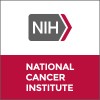
Evaluation of a Human Immunodeficiency Virus (HIV) Blood Screening Assay
Healthy DonorsHIV PositiveTo test blood samples from volunteer donors of whole blood and blood components using a new investigational test that detects human immunodeficiency virus (HIV) infection. Results will be compared to the current HIV screening assay.

Monitored Antiretroviral Pause in Chronic HIV-Infected Subjects With Long-Lasting Suppressed Viremia...
HIV SeropositivityProspective, open-label, single arm, non-randomized, proof-of-concept study. Eligible patients will sign a written informed consent and will be followed-up at screening, baseline (ART interruption) and at 1, 2, 3, 4, 6, 8, 10, 12, 16, 24, 32, 40, 48 weeks thereafter or at ART resumption. The study visits will include: general clinical assessment, routine laboratory tests including: creatinine, phosphorus, calcium, alkaline phosphatase, AST, ALT, fasting glucose, total cholesterol, HDL- and LDL-cholesterol, triglycerides, CD4+ cell count and CD4+/CD8+ ratio. Additional 30 mL of peripheral blood will be withdrawn at study visits for further virological, and immunological investigations and for bio-banking purposes. During follow-up, the occurrence of two consecutive HIV-1 RNA values >50 copies/mL or the occurrence of stage B or C AIDS-defining events or any serious non-AIDS clinical event at least potentially related to treatment interruption will be criteria for ART resumption. All patients with HIV-RNA<50 copies/mL at week 48 (end of the study) will resume their baseline ART regimen. The main demographic, clinical and therapy information will be accurately recorded at the study visits in an electronic Case Report Form.

Positive Pregnancy Program
HIV Positive Pregnant WomenThe Positive Pregnancy Program is an innovative, unique, interprofessional model of care for HIV-positive pregnant women. This program has been in place at St. Michael's Hospital for five years. This study is important because it will allow for a critical evaluation of the Program, and to identify strengths and weaknesses. This will in turn provide the opportunity to improve delivery of care for HIV positive women.

Assessment of the Effectiveness of New Clinical Guidelines for Differential Diagnosis and Management...
AnemiaFever1 moreUtilizing funding through the President´s Emergency Plan for AIDS Relief (PEPFAR) this project seeks to assess the effectiveness of a subset of the new Mozambican clinical guidelines for the diagnosis, initial management, and follow-up ( >1 follow-up visit to determine response to initial and/or second-line therapy) of common signs and symptoms in HIV-infected adult patients as used under field conditions by Mozambique-based clinicians in MOH health facilities in Zambézia province, Mozambique. The operational feasibility of the new guidelines will be described; they will be compared to the previous standard of care for the problem(s) of interest, and the clinical importance of differences between guidelines designed for Mozambican non-physician clinicians and new guidelines (also issued in late 2009) for Mozambican physicians will be described. The subset of guidelines to be addressed in the current phase of this 2-year project includes algorithms for diagnosis and management of acute fever, persistent fever, and anemia.

Efficiency of the Hepatitis B Sci-B-Vac Vaccine in HIV Positive Patients
HIVHBV vaccination is of paramount importance among HIV positive persons due to an increased risk of infection and disease progression. The most widely used ENGERIX B vaccine reaches a lower rate of vaccination (20-70%) among HIV positive vaccinees (compared to over 90% in the normal population). Sci-B-Vac is novel vaccine containing 3 antigens and is therefore more immunogenic (as opposed to one in ENGERIX B). Its use has been associated with higher and more rapid vaccination rates. Therefore, it has a theoretical advantage in HIV positive individuals.

Relationship Between Fatigue and Mitochondrial Damage in Patients With HIV/AIDS
HIV InfectionsFatigue4 moreThis study will examine abnormalities in mitochondria (energy-producing machinery of cells) and in genes related to mitochondria in the blood cells, muscle, and fat of HIV-positive patients who are taking nucleoside reverse transcriptase inhibitors (NRTIs) and in patients not currently taking HIV medications, and compare the results to healthy volunteers. Many patients with HIV infection take NRTIs to help control the infection. These medications may damage cell mitochondria, possibly causing side effects such as fatigue. This study will explore the relationship between changes in mitochondria and related genes and patient reports of energy level, mood and quality of life. Healthy volunteers and HIV-infected patients between 18 and 55 years of age may be eligible for this study. Healthy volunteers must test negative for the HIV antibody. HIV-positive patients must have been diagnosed positive for at least 1 year. Patients who are taking antiretroviral therapy must have been taking the same drug regimen (with at least two NTRIs and no protease inhibitors) for at least 3 months. HIV positive patients not taking antiretroviral medication must not have had antiretroviral therapy for at least 1 year. Candidates are screened with a medical history, brief physical examination, blood and urine tests, and questionnaires related to mood and energy. Qualified volunteers will undergo the following procedures during three or four study visits: Visit 1 Complete history and physical examination, blood tests, and questionnaires about energy level, mood, and quality of life. Visit 2 Muscle and fat biopsy: Before the biopsy, blood is drawn to check blood counts and to test for pregnancy in women who can become pregnant. The biopsy is done on an outpatient basis in the operating room. The site of the biopsy (an area on the upper arm or upper leg) is numbed with an injection under the skin. A 1-inch incision is made over the muscle to be biopsied and a small sample of muscle tissue and small sample of fat are removed. The incision is then closed and bandaged. Following the biopsy, you will be monitored for about 4 hours in the clinic. Strenuous physical activity should be restricted in the week following biopsy to allow healing. Visit 3 Examination of biopsy site and possible apheresis: The biopsy site is examined for healing. Apheresis may be scheduled for this visit or for an extra visit between the biopsy and the final visit. This procedure for obtaining white blood cells for study is optional. For apheresis, blood is withdrawn from a needle placed in a vein in the arm and the white cells are separated from the rest of the blood. The white cells are extracted and the red cells and plasma are then returned to the body through a second needle.

Effects of Potent Antiretroviral Therapy on Kaposi s Sarcoma
HIV SeropositivityKaposi's Sarcoma1 moreBackground: Kaposi s sarcoma (KS) is caused by a gammaherpesvirus called Kaposi s sarcoma-associated herpesvirus (KSHV), or human herpesvirus-8 (HHV-8). However, infection with KSHV is not sufficient to cause KS, and HIV infection is an important cofactor. Treatment of HIV with potent antiretroviral therapy can reduce the risk of KS, and can also induce regression in patients with established HIV-KS. One mechanism by which HIV is believed to contribute to KS is through HIV-induced immunodeficiency which leads to a loss of immunologic control of KSHV and/or KS itself. However, other mechanisms may also contribute. Objectives: One primary objective is to assess the effects of the initiation of potent anti-HIV therapy on specific factors possibly linked to the control or pathogenesis of KS, namely serum viral IL-6 and plasma VEGF levels, in patients with KS or at risk for KS by virtue of being infected with KSHV/HHV-8. Another is to assess the effects of anti-HIV therapy on KSHV infection. Secondary objectives are to assess the effects of potent antiretroviral therapy on established KS and other factors related to KS or KSHV infection. Eligibility: The principal eligibility factors are age 13 or above, HIV infection, and either KS or infection with KSHV. Exclusion factors include KS that requires specific therapy, recent corticosteroid therapy, recent cytokine therapy, or opportunistic infections requiring therapy. Design: Patients will be treated with potent antiretroviral therapy. For patients with established KS, the effects of the therapy on the KS will be monitored. In addition, a variety of factors related to KS, HIV infection, therapy, or KSHV infection will be monitored. These include the HIV viral load, KSHV secretion in saliva, the CD4 count, serum VEGF levels, and serum IL-6 levels.

Anti-HIV False Positivity Rate in Pregnant Women; and Investigating the Factors Affecting This Situation...
HIV SeropositivityAcquired Immunodeficiency Syndrome2 moreHIV virus is an etiologic agent of ( AIDS ) immunodeficiency syndrome . It is known that the estimated rate of transfer from mother to baby is 25% to 45%, pregnancy rate is 5-10%, pregnancy rate is 15-20% and in lactation period is 5-10%. Risk factors; maternal viral load, breastfeeding, vaginal birth, and prematurity. Although there is a high rate of false positivity in prenatal screening in our country, one of the factors affecting this is the number of pregnancies.

Early Community Client-LED ART Delivery in Nakivale Refugee Settlement
HIV SeropositivityTo pilot early community client-led ART (anti-retroviral therapy) delivery (CCLAD) in Nakivale Refugee Settlement in Uganda and assess the feasibility and acceptability of this intervention in this setting.

Safety and Efficacy of Famciclovir in HIV1 Positive Adults With Recurrent Genital Herpes
HIV PositiveHerpes Simplex1 moreTo determine the efficacy of Famvir 500mg bd as suppressive antiviral therapy for acute genital Herpes simplex virus (HSV) outbreaks in HIV subjects.
